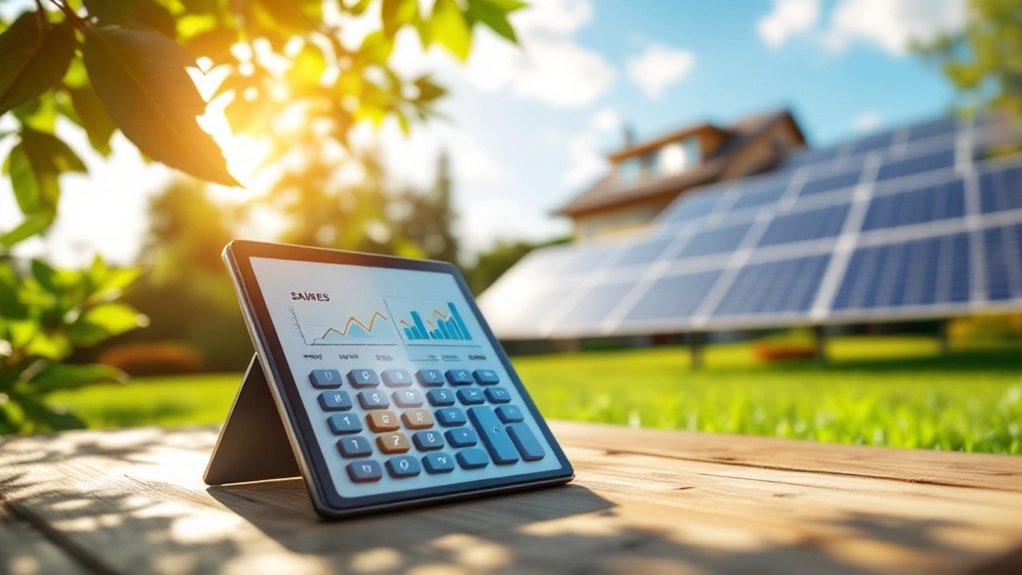
Solar Energy Cost Savings Calculator: Is It Worth It?
The solar energy cost savings calculator serves as a practical resource for homeowners contemplating solar installation. It evaluates factors such as local electricity rates and system size to provide insights into potential savings. With the rising interest in renewable energy, many wonder if the initial investment is justified. This tool offers a glimpse into financial viability, yet questions about long-term benefits and hidden costs remain. What could these calculators reveal about individual circumstances?
Understanding Solar Energy Costs
Although solar energy offers numerous long-term benefits, understanding the associated costs is essential for potential users. Initial expenditures typically include the purchase and installation of solar panels, inverters, and related components. These upfront costs can be significant, often deterring interested homeowners or businesses. However, various financial incentives, such as tax credits and rebates, can offset these expenses. Additionally, ongoing maintenance costs are generally low, making solar systems an attractive long-term investment. Users should also consider the potential savings on electricity bills and the increase in property value that solar installations can provide. Understanding these financial aspects allows potential users to make informed decisions about shifting to solar energy and evaluating its overall economic viability. Furthermore, embracing renewable energy practices can enhance the overall sustainability of one’s household or business.
How Solar Energy Cost Savings Calculators Work
Solar energy cost savings calculators serve as valuable tools for individuals and businesses exploring the financial implications of solar panel installations. These calculators utilize specific inputs such as local electricity rates, average sunlight hours, and system size to estimate potential cost savings over time. By analyzing factors like installation costs, incentives, and financing options, they provide a thorough overview of the expected return on investment. Users can input their unique data, allowing for tailored projections that reflect individual energy consumption and local regulations. The output typically includes savings estimates, payback periods, and environmental benefits, enabling informed decision-making regarding solar investments. Ultimately, these calculators demystify the financial aspects of solar energy, empowering users to assess the viability of adopting solar technology. As renewable energy sources continue to grow, understanding the economic challenges associated with these technologies becomes increasingly important.
Key Factors Influencing Solar Installation Costs
Several key factors greatly affect the costs associated with solar installation. The system size and capacity required to meet energy needs play an essential role, as larger systems typically incur higher expenses. Additionally, the installation location and its specific conditions can influence both the complexity and overall cost of the project. Furthermore, understanding work-life balance can help homeowners make informed decisions about energy savings and overall lifestyle improvements.
System Size and Capacity
When evaluating the costs associated with solar installation, system size and capacity emerge as critical factors. The size of the solar system, typically measured in kilowatts (kW), directly influences the overall cost. Larger systems require more solar panels and equipment, increasing initial investment. However, they also generate more electricity, potentially leading to greater long-term savings. Capacity, defined as the maximum power output of the system, determines how much energy can be produced under ideal conditions. Homeowners must consider their energy consumption needs to select an appropriately sized system. A well-matched system can enhance efficiency and reduce payback periods, making it essential to balance size and capacity when calculating potential savings from solar energy investments.
Installation Location and Conditions
The installation location and conditions play a pivotal role in determining the overall costs of solar energy systems. Factors such as geographical location, roof orientation, and shading can greatly influence installation expenses. For instance, homes in areas with high sunlight exposure tend to benefit from greater energy output, reducing the payback period. Additionally, roofs that are flat or have a south-facing orientation are often more suitable for solar panels, potentially lowering installation costs. Conversely, challenging conditions such as heavy snowfall, high winds, or structural limitations may require specialized mounting systems, which can increase overall costs. Local regulations and permitting processes also affect expenses, as some regions may have stricter guidelines, necessitating additional planning and compliance efforts.
Evaluating Your Energy Needs
Understanding energy needs is vital for anyone considering solar energy installation, as it directly impacts the system’s design and efficiency. Individuals should begin by analyzing their current energy consumption patterns, including peak usage times and seasonal variations. This evaluation helps in determining the size and capacity of the solar system required to meet their needs effectively. Factors such as household size, appliances, and energy habits should be considered to create a thorough energy profile. Additionally, evaluating future energy needs is significant, especially with potential lifestyle changes or the addition of electric vehicles. By accurately gauging energy requirements, homeowners can make sure their solar energy systems are optimized for performance and sustainability, ultimately leading to more effective energy management. Moreover, understanding how AI is transforming healthcare can provide insights into optimizing energy use in various sectors, including residential settings.
Estimating Long-Term Savings
Estimating long-term savings from solar energy requires careful consideration of various factors that influence overall costs and benefits. These factors include the initial investment for solar panel installation, potential tax incentives, and local utility rates. Homeowners should analyze their average electricity consumption to determine the size and capacity of the solar system needed. Additionally, the lifespan of solar panels, typically around 25 years, plays a vital role in calculating long-term savings. Maintenance costs, while generally low, should also be factored in. Energy production can fluctuate based on geographic location and weather patterns, impacting the overall financial outlook. By evaluating these elements, individuals can gain a clearer understanding of the potential savings they may achieve over time with solar energy. Practicing mindfulness can also help homeowners make more informed decisions regarding their energy investments.
Comparing Solar Energy With Traditional Energy Sources
When comparing solar energy to traditional energy sources, the cost of installation presents a significant initial consideration. However, a long-term savings analysis often reveals that solar energy can lead to substantial financial benefits over time. Understanding these factors is essential for consumers evaluating their energy options.
Cost of Installation
The installation costs of solar energy systems present a significant consideration when comparing them to traditional energy sources. Initial expenses for solar panels, inverters, and mounting hardware can be substantial, often ranging from $15,000 to $25,000 for residential systems before incentives. In contrast, traditional energy sources typically involve lower upfront costs, primarily tied to utility connections and infrastructure. However, these costs can accumulate over time through continuous energy bills and maintenance fees. Additionally, solar energy systems may incur installation labor costs, which can vary based on location and system complexity. The disparity in installation costs emphasizes the importance of analyzing both immediate financial outlays and potential future energy expenses when evaluating the viability of solar installations compared to conventional energy sources.
Long-Term Savings Analysis
Evaluating the long-term savings of solar energy compared to traditional energy sources reveals significant financial advantages over time. Solar energy systems typically require a higher upfront investment; however, the reduction in monthly utility bills can lead to substantial savings over the system’s lifespan, often exceeding 25 years. Traditional energy sources, such as fossil fuels, are subject to price volatility, making long-term budgeting unpredictable. In contrast, solar energy offers a stable cost structure, especially with net metering benefits. Additionally, government incentives and tax credits can further enhance the economic viability of solar installations. Ultimately, homeowners and businesses may find that switching to solar not only reduces environmental impact but also provides a more predictable and sustainable financial future.
Incentives and Rebates for Solar Energy
As homeowners consider the financial benefits of solar energy, various incentives and rebates can greatly lower initial installation costs. Federal tax credits, such as the Investment Tax Credit (ITC), allow homeowners to deduct a significant percentage of solar installation expenses from their federal taxes. Additionally, many states and local governments offer their own rebates, which can further enhance savings. Utility companies may also provide incentives for solar energy adoption, including performance-based payments or bill credits. Moreover, some financing options, such as solar loans or leases, enable homeowners to spread out costs while still benefiting from savings on energy bills. Overall, these financial incentives can make solar energy more accessible and appealing for potential adopters.
Real-Life Case Studies of Solar Savings
How much can homeowners truly save by switching to solar energy? Real-life case studies reveal substantial savings. For instance, a family in California installed a solar system and reported a reduction in their electricity bills by approximately $150 monthly, translating to $1,800 annually. In Texas, another household experienced nearly $200 in monthly savings, leading to a remarkable annual total of $2,400. These savings were further enhanced by local incentives, reducing initial installation costs. Additionally, a case in Florida highlighted how a solar system increased property value, with the home selling for $20,000 more than comparable homes without solar. Overall, these examples illustrate that homeowners can achieve considerable financial benefits by adopting solar energy solutions.
Making an Informed Decision on Solar Investment
The financial benefits demonstrated in real-life case studies underscore the importance of making an informed decision regarding solar investment. Prospective buyers must assess installation costs, available incentives, and potential savings over time. Evaluating personal energy needs and consumption patterns is vital for understanding system size and efficiency requirements. Additionally, researching reputable solar providers can help guarantee quality installation and service. By utilizing tools such as solar energy cost savings calculators, individuals can estimate return on investment and payback periods. Moreover, considering local regulations and utility rates can greatly impact overall savings. Ultimately, a thorough analysis empowers homeowners and businesses to make sound financial choices that align with their sustainability goals.
Frequently Asked Questions
How Does Solar Panel Orientation Affect Energy Production?
The orientation of solar panels greatly influences energy production. Panels facing south typically receive maximum sunlight, enhancing efficiency. Ideal angles can vary based on geographic location, time of year, and local weather conditions.
What Maintenance Is Required for Solar Energy Systems?
Maintenance for solar energy systems typically includes regular cleaning of panels, inspection for damage, monitoring inverter performance, and ensuring proper functioning of electrical components. These tasks help maximize efficiency and prolong the system’s lifespan.
Can I Install Solar Panels on a Flat Roof?
Installing solar panels on a flat roof is feasible and often advantageous. Proper mounting systems, designed for stability and drainage, guarantee efficiency while maximizing solar exposure, making it a viable option for many property owners.
What Happens if I Move After Installing Solar Panels?
When an individual moves after installing solar panels, the system typically remains with the property. New homeowners may benefit from reduced energy costs, while the original owner might see increased property value or potential lease agreements.
Are There Any Environmental Impacts of Solar Energy Systems?
The environmental impacts of solar energy systems include land use changes, habitat disruption, and resource extraction for manufacturing. However, they greatly reduce greenhouse gas emissions and reliance on fossil fuels, contributing positively to long-term environmental sustainability.
Conclusion
To summarize, a solar energy cost savings calculator serves as an essential tool for homeowners contemplating solar installation. By evaluating various factors such as local electricity rates, system size, and available incentives, these calculators provide valuable insights into potential savings and financial viability. Ultimately, investing in solar energy can lead to significant long-term reductions in electricity bills and increased property value, making it a worthwhile consideration for those looking to enhance their energy independence and sustainability.



